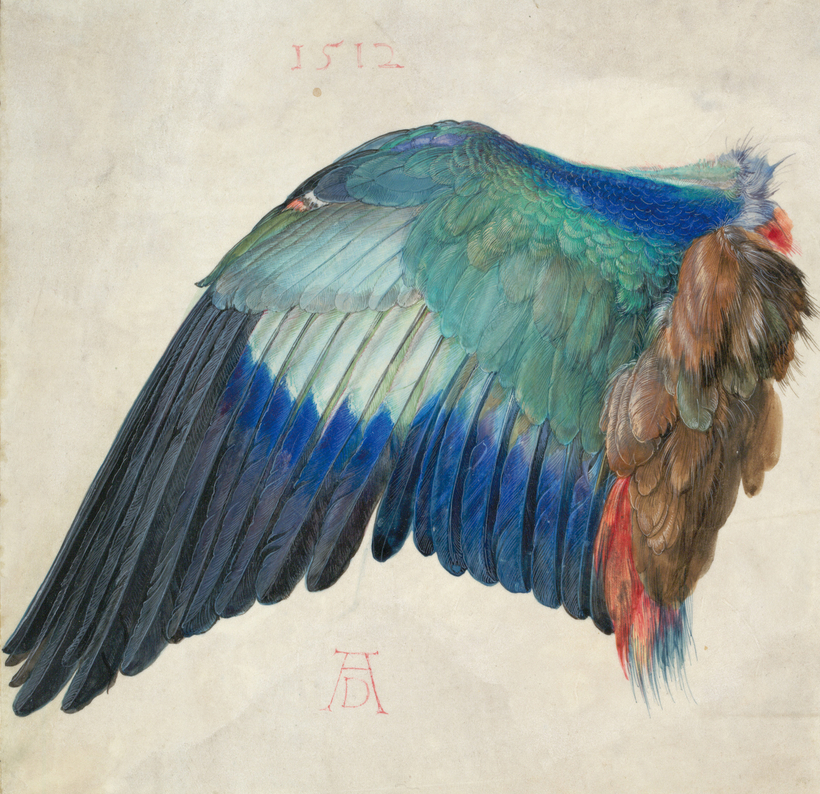“He can paint anything,” Erasmus of Rotterdam said of Albrecht Dürer, the painter, printmaker, typographer, inventor, and art theorist who brought the High Renaissance from the South to the North. “Even things one cannot paint—fire, sun rays, thunder, electric storms, lightning, and banks of fog … the whole human soul as revealed in the body’s form, and almost even the voice itself.”
This was not hyperbole. In Dürer’s exquisitely meticulous watercolor from 1503, The Great Piece of Turf, our otherworldly viewpoint is that of a tiny animal or insect on a swampy bit of earth, beneath towering grasses, leaves, and dandelions. While looking at Dürer’s many studies of praying hands, you can almost hear the angels sing. And long before Rembrandt, Dürer—who was both beautiful and vain—pioneered the genre of the psychological self-portrait. His earliest known drawing, a silverpoint self-portrait at age 13—with flowing locks, confident eyes, and a lengthy index finger—rivals drawings by fellow Renaissance men Leonardo, Michelangelo, and Raphael, suggesting that among the original Fab Four, Dürer was the cute one.
These pictures will be among the staggering gathering of more than 200 drawings, prints, and paintings comprising the Albertina Museum’s Dürer retrospective, opening on September 20. When I first saw some of these works—in 2013 at the National Gallery in Washington, D.C.—I was dumbstruck.
Dürer, who lived from 1471 to 1528, explored numerous themes—mythological, natural, sacred, and secular—and was a religious humanist who combined rationality, faith, and the ideal. He had an unerring, encyclopedic eye for observable particularities: hairs, feathers, and wrinkles, subtle shifts in light and facial expression. (His mechanical perspective device was the first step toward the photographic camera.) But it is not Dürer’s astounding details that ultimately wow us. It is his miraculous ability to fuse observed minutiae into believable, emotionally expressive, and metaphorically rich wholes. In his electrifying engraving Adam and Eve (1504), we experience the textural qualities of fur, bark, fruit, and flesh; the budding of eroticism, self-awareness, and free will. Every beautiful element of the Garden and its inhabitants is accounted for; yet their world, shrinking here, magnified there, is forever shattered—transforming right before us. Dürer is that rare visionary who gives us the forest and the trees, and a wonderful story besides.
Elevating the popular woodcut to high art, Dürer was also the greatest and most prolific of the early printmakers—and the first world-famous artist. It’s a blessing that we’re able to see his work in numerous museums. But Vienna’s Albertina, with one of the largest and most important collections of Dürer, has a home-court advantage. This monumental survey of the master from Nuremburg should prove definitive. It should also make clear that the Renaissance does not belong entirely to the Italians. —Lance Esplund

